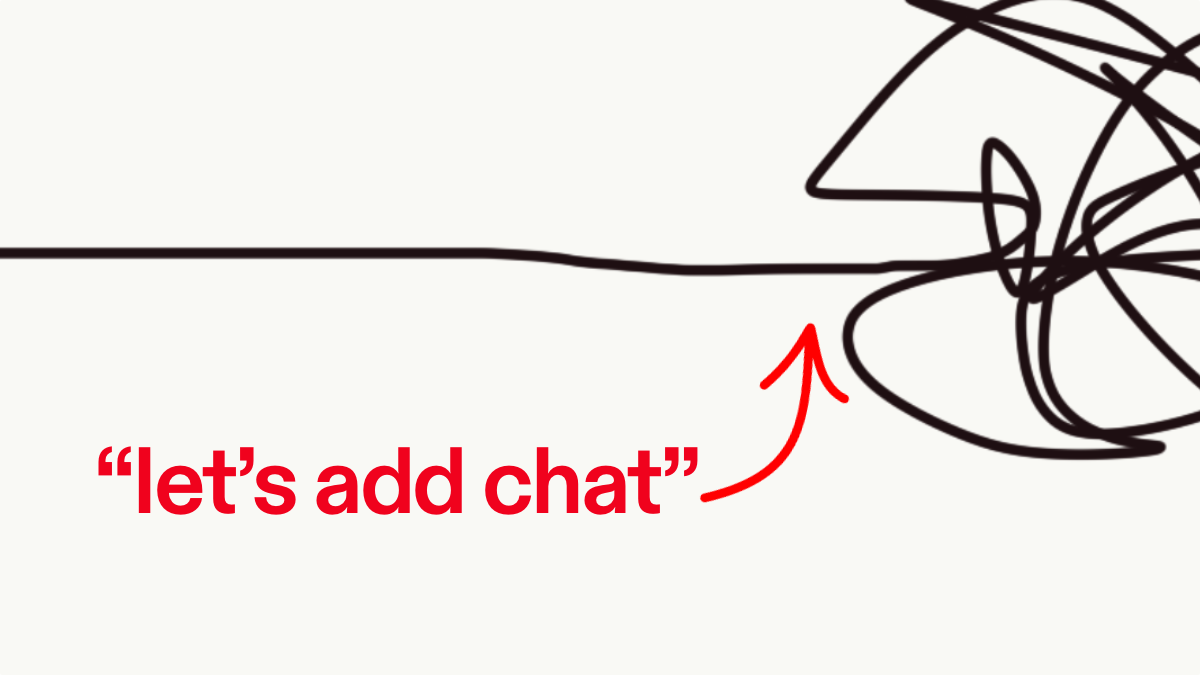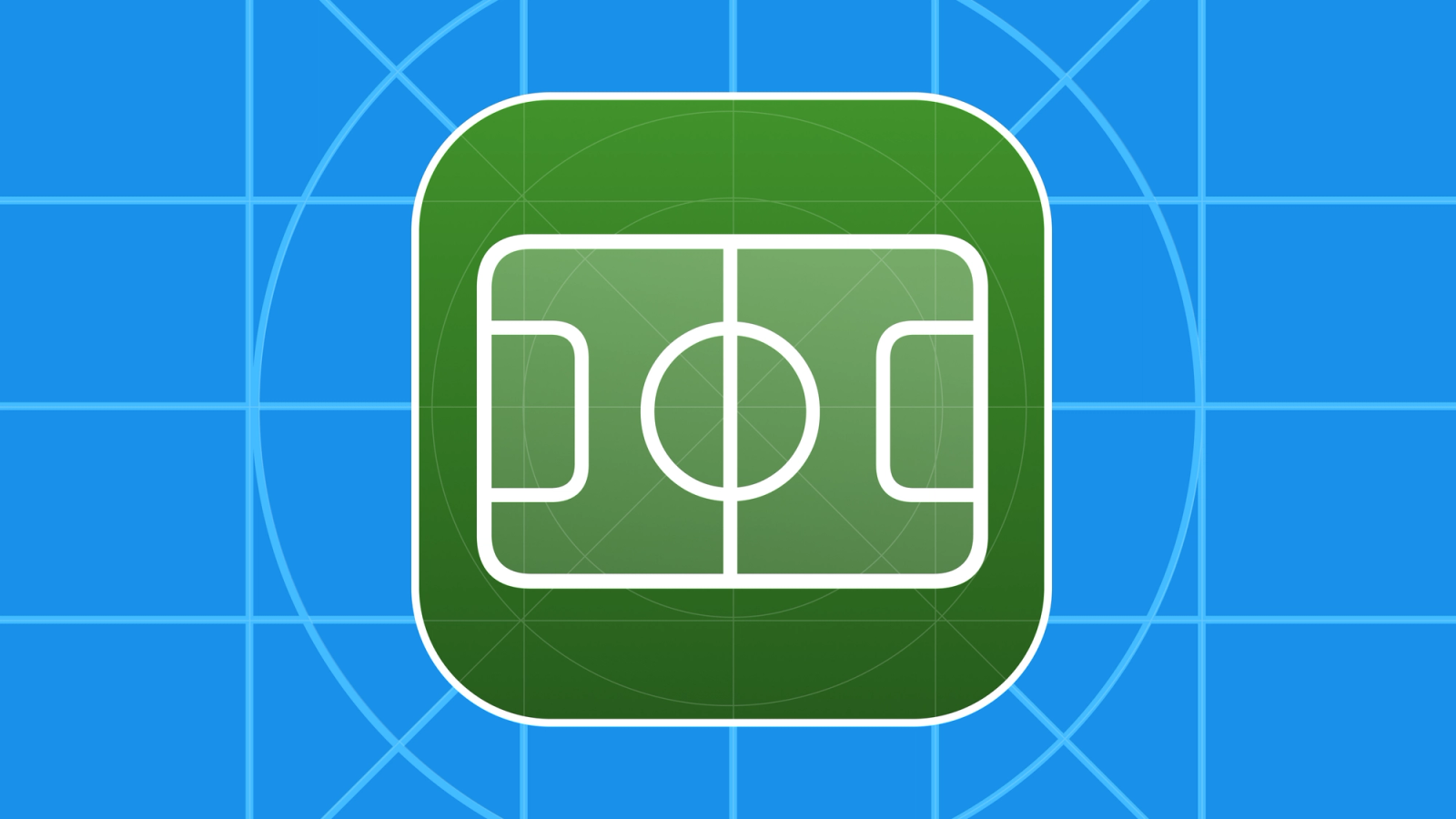Your app doesn't need a chat feature

At Lickability, we get a dozen or so pitches for app ideas per week. I’ve noticed a worrying trend emerging throughout a fair number of these pitches: a chat feature.
On its face, it’s an obvious fix to whatever issue you’re running into. Trying to increase user engagement? Let users chat with each other inside the app. Community building? Mega group chats. Support and feedback channels? Sounds like a chatbot.
The cracks begin to show when rubber hits the road and we start thinking about things critically.
Chat is Noisy
At the very highest level, the core issue with adding a chat feature is that it dilutes the potency of your app. What makes an app sticky at launch is being really good at a very specific thing — not an app that immediately covers every possible base.
Imagine if Instagram, in its infancy in 2010, had tried to pack in everything from day one: messaging, photo sharing, video, stories, shopping, and live streaming. It would have sunk.
Instead, they started with a simple killer feature—transforming lousy cell phone photos into share-worthy images. The rest was drip-fed over 15 years. Instagram DMs didn’t even appear until four years post-launch.
Start with your core idea. Avoid drowning it in feature overload.
Chat is Insular
This may be obvious, but it’s worth stating: when you create an insular chat feature, you limit who you can chat with to only other users.
If one of your users finds something in your app that they really want to share with a friend, they first need to persuade them to download the app, sign up, possibly follow each other, and then share the content. At each step, the likelihood of the friend reaching the finish line drops by 15%.
But what’s almost 100% guaranteed is that if someone wants to share content in your app with a friend, they probably have that friend’s number or Messenger or WhatsApp or Telegram or Signal or Discord or Slack or Snapchat. And all of those apps support rich links. Engineering time is better spent getting that experience frictionless and great — meet potential users where they’re at.
Chat is Expensive
If your chat feature isn’t about sharing content, there’s a good chance there’s already a product or company out there that exists solely for your type of use case. For instance, if you need users to chat with support, Business Chat might be a good option. And it’ll almost certainly be magnitudes less expensive than building a bespoke chat feature.
I fully recognize this is counter to our bottomline as an app development agency, but removing a chat feature will save so much in your budget that can be better spent on things that your users would appreciate more.
For instance, plussing your app to make it a joy to use and have it work seamlessly with the system. Or adding first-class support for rich link previews like I mentioned above.
Chat is Messy
Scaling
As your app (hopefully) grows, you will need to scale the chat infrastructure up and up and up. And it’s not as trivial as throwing a more expensive AWS machine at it — there’s a reason why Meta has hundreds of people working solely on Messenger. Chat has a bunch of hard problems intrinsic to the nature of the product. Why would you want to be restrained by those problems if chat is just an afterthought?
Baggage
When you add a chat feature, you immediately take on the intrinsic baggage that comes with it. Where are you going to store messages? What about the attachments that could be orders of magnitude larger than a text message? How are you going to protect them? How are you moderating user-generated content for inappropriate behavior?
It’s a lot of heavy lifting for something that might not even align with your app‘s core value.
User expectations
Chat apps have gained a lot of features recently that users expect to be standard — reactions, in-line replies and threading, attachments, rich text. These features aren’t intrinsic, and a chat feature without those might end up feeling like a 2000s AIM client.
We have enough chat
It’s 2024. We have accounts everywhere. There are probably 100 apps on your phone, a good chunk of which can send notifications.
I wake up every morning and check Bluesky, Discord, Instagram, Mastodon, LinkedIn, iMessage, Snapchat, Threads, X, TikTok, Slack, my email, my Figma notifications, and my todo list inbox.
Your app‘s biggest draw might just be offering a sanctuary from notification overload, and offering a hyper-focused experience. Something that distills your secret sauce to its purest ingredients.
With all this in mind, these points are just guidelines. Convinced your chat feature breaks the mold? I’m all ears. Reach out, and let’s see what we can build together.

